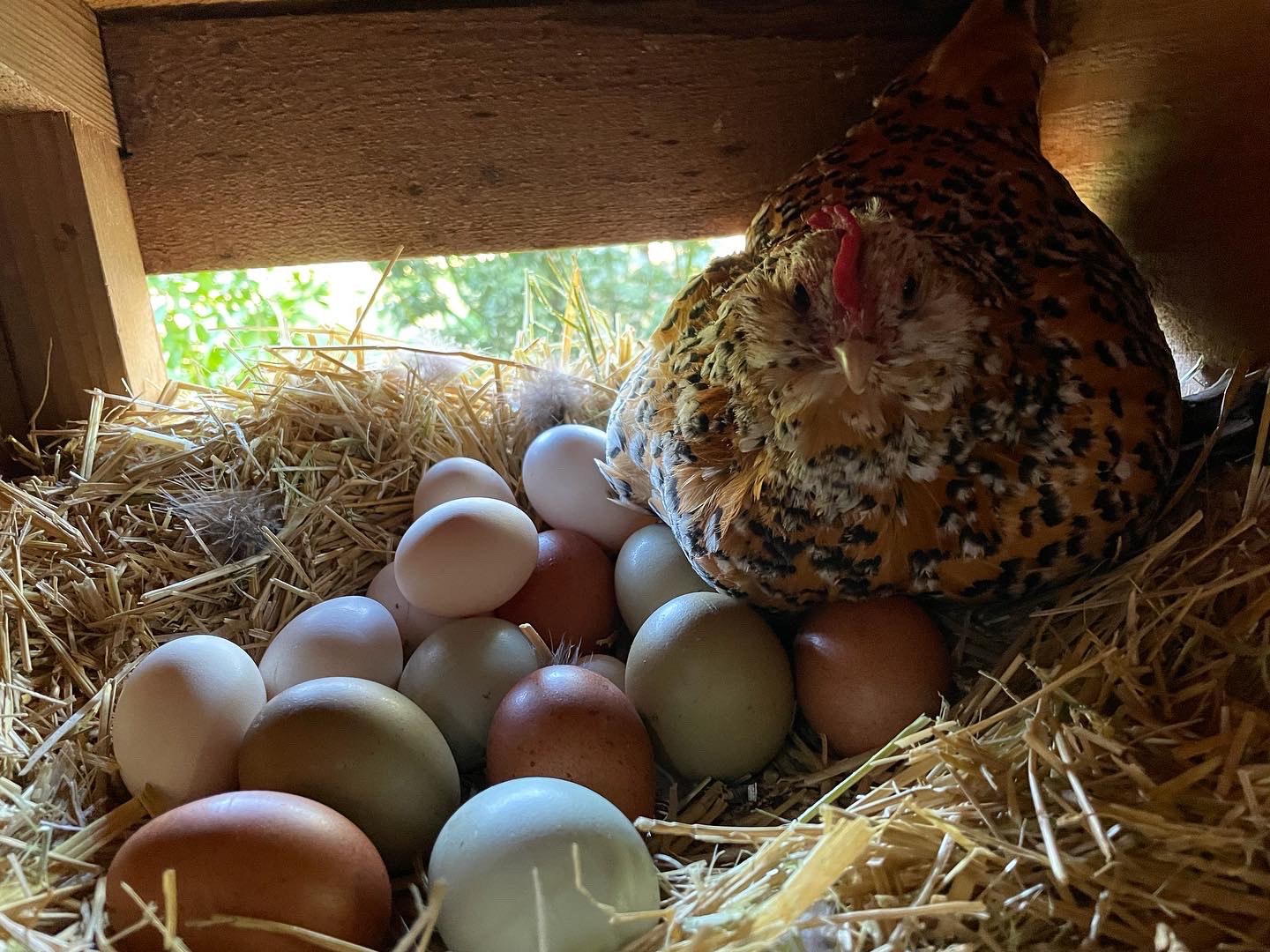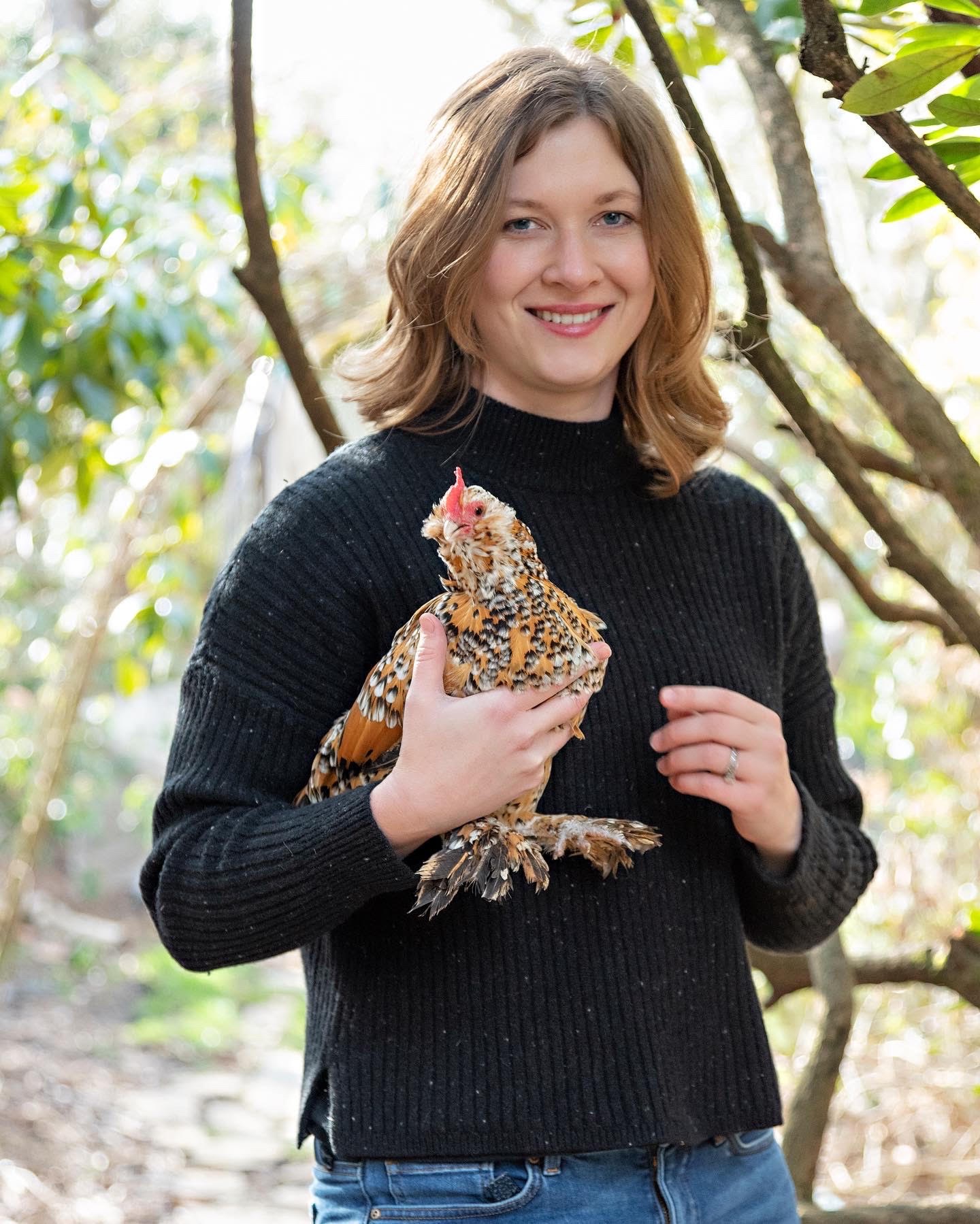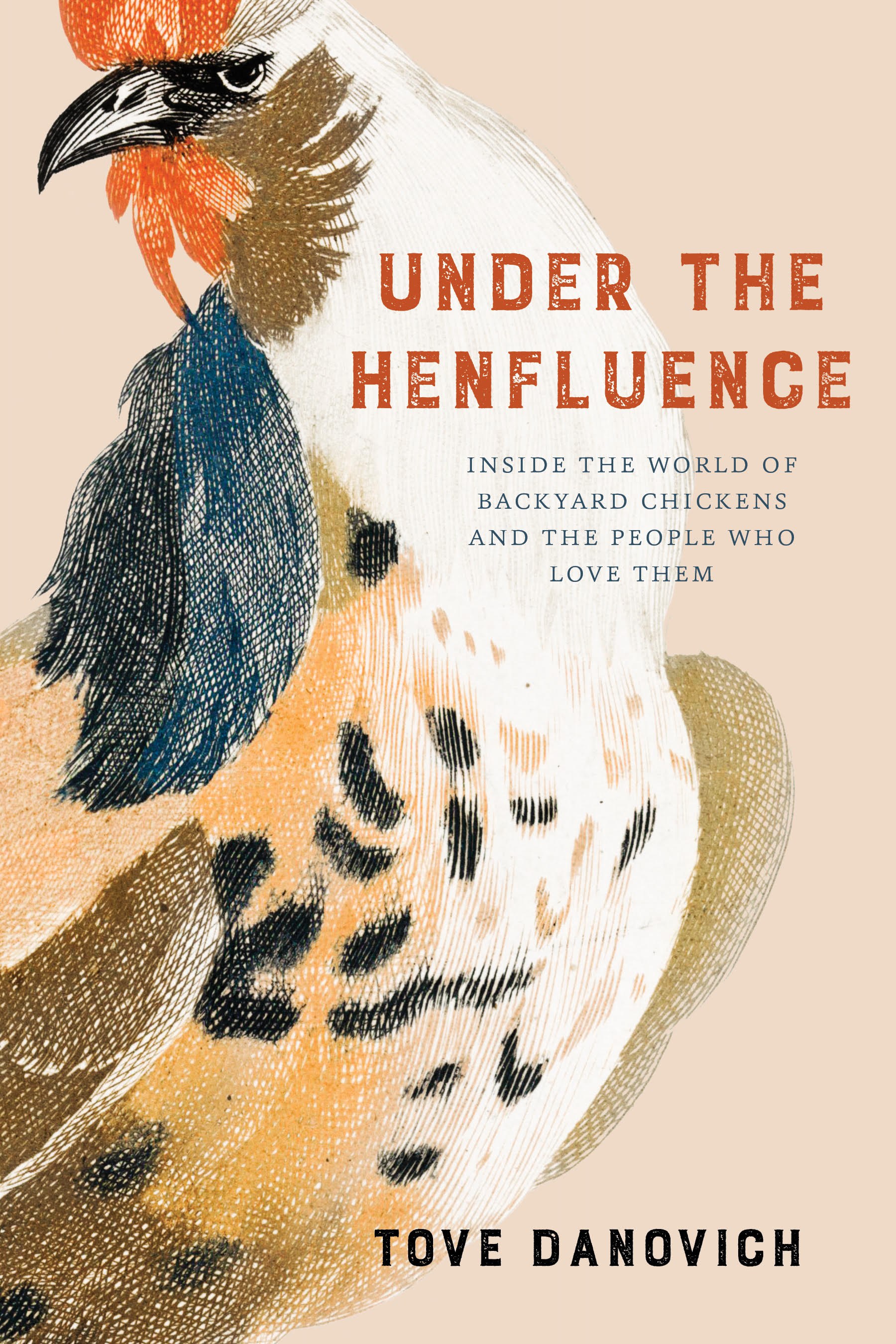For those of us who eat meat, chicken is easy to dismiss as just another dinner ingredient. Although the 26 billion chickens living on industrial farms might feel differently about that. There is another way of raising your own chickens, and it was once fairly common in the United States. But as our food systems changed, and people moved out of rural areas, the practice declined. Until recently. Raising chickens in your backyard has once again become a thing. In some places, backyard chickens can be a status symbol. Journalist, Tove Danovich describes her journey to becoming a backyard chicken farmer in her new book, “Under the Henfluence.”
This interview has been edited for length and clarity.
KCRW: You write, “Today, there's never been a worst time to be a chicken.” What do you mean by that?
Tove Danovich: The chicken of the 21st century, the bird itself, as well as how it's raised, is so different from even 60 years ago. Certainly different from 100 years ago, when my grandmother was a little girl, when chickens were in backyards. People raised them in small flocks, they had access to the outdoors. Many breeds of chicken then were still what's considered dual purpose. So they were raised for both eggs and meat, and you would have the same chicken lay eggs until she gets too old, and then she becomes thinner. That all started to change around WWII. The change had been in place for a little while, but it really started to get codified that we moved our chickens inside to these giant farms where increasingly, like seeing so many things in modern America, the birds were expected to specialize. So now we have these dual tracks on most birds, where we have the egg-laying hens who have gone from laying about 150 eggs a year in 1947, to now close to 300 a year today. And because of that, they're not very good for meat. So we have this other type of chicken, the broiler chicken, who gets to be their six-pound slaughter weight in roughly six weeks, and they are then killed to become rotisserie chickens for people all around the world.

"Henfluencers" in their own right, Danovich's chickens have more than 100,000 followers on social media. Photo by Tove Danovich.
Raising chickens runs in your family. Tell us about your great grandmother and how she got into the business while living on a farm in North Dakota.
My great grandmother, like I think a lot of farm women from the early 1900s, found her way into the chicken business kind of whether she wanted to or not. She was gifted as a wedding gift from her new husband, a coop and as many chickens as she could raise. And she was given that so that she could use the money she got from those hens eggs, the meat eventually, and that paid for the household expenses. This was so common that a lot of people refer to this as egg money. And a lot of people think that this egg money was just to pay for nice jewelry for getting your hair done. But that wasn't the case at all. Egg money was actually a huge contributor to a lot of families. In my grandma's case, you know, it paid for school books, clothing and many families that paid for food, essentially everything except for the farm itself was paid for by these women and their small flocks of backyard chickens.
So raising chickens comes back into vogue. And I have a sense of when this was because I was alive, and working, and focusing on food. But tell us when it started to happen and what you think led to it.
I noticed it in the early 2000s. It started growing again. Of course some people have kept chickens in their backyards this whole time. Certainly people in more rural areas. That hasn't gone away. But around 2005 or so, we started getting a lot of these food books like “Fast Food Nation,” or “The Omnivore's Dilemma” that looked at what was happening in our industrial food system and questioned if there could be a better way. So I would peg the return of backyard chickens to roughly 2005 to 2010, or so. But it's kept growing since then. And we've had waves of people getting into chickens again, we saw it certainly with the early lockdown in 2020, where hatcheries were actually sold out of many breeds of chicks because so many people were stuck at home and decided it was a great time to put a coop in the backyard.
When you finally got your first batch of chicks, you and your husband were living in a house with a yard in Portland, Oregon. How many did you get? What breed did you initially decide upon? And did you name them?
We got three initially, which seems like a very practical number for a two-person household in terms of the egg production. We did name them: I had Joan who is a Dominique, which is a black and white barred breed, and the first recognized chicken breed in America, which I thought was a fun bit of history to have for my first flock. I had Betty who was a Frost White Legbar, and she would have laid beautiful sky blue eggs. So she was my first entree into the world of rainbow egg baskets. And then I had Peggy who is an Olive Egger, and they are known for laying beautiful olive green eggs – which she's five now and she still lays just giant extra large green eggs that are just gorgeous.

"Today, there has never been a worse time to be a chicken," says Tove Danovich, describing the industrialization of raising the fowl for eggs and meat. Photo by Jamie Bosworth.
And they're all different with their feather patterns?
Yes, and their personalities are different too, which is, I think, a thing people don't really expect when they go into chicken raising. I now have eight, eight hens. And they're mostly different breeds. They're all different colors and sizes. And I can actually tell who's talking to me because their voices and the sounds they make are different. And some of them are a little friendlier, and like to come up and give me a pack and see what I'm doing. And others like to always be at arm's length unless there are treats involved.
Raising chickens may sound quite charming, and they look unbelievably cute in photos. But you face some serious challenges. Tell us about some of those.
One of my first challenges came, unfortunately, pretty early on. And that was when Betty, who is one of these first chicks I had, was killed by my beloved dog who I'd had as a puppy. We had tried really hard to see if we could get to the two species to get along. Our dog just had too high of a prey drive. And they're not allowed outside at the same time anymore. Everything has been fine since, but one of the hardest things about chickens is that they die. Some can live quite a long time. I think currently, our longest live chickens are 20 or 21 years old, but many more of them live only about five to 10 years.
What about their safety? It seems like they'd be easy pickings for coyotes or other animals looking for a tasty meal.
Definitely. My first bit of advice I always give to people who asked me what are your top tips if you're looking into getting backyard chickens is to have a good predator-proof coop because it can really make or break your chicken keeping experience. A lot of these pre-made coops that they sell online are quite small and made out of essentially balsa wood, and just about anything that wants to get in from a dog to a raccoon to a bear. Certainly people in Alaska have to bear proof their coops which I'm not jealous of will rip right through it. So I definitely recommend people either find someone local who can make a coop or make one themselves because a lot of what you can't buy just you're not going to be happy with it and you don't want disaster to strike.
You write, “Looking at my hens all distant relatives of the Tyrannosaurus Rex, it's easy to see the predators gaze in their eyes.” What did you learn about chicken behavior and psychology from this experience?
I learned so much about them. They make at least 24 or so different noises that all correspond to specific things. They have an alarm call for predators on the ground versus predators in the sky. When a hen has baby chicks, she'll make an alarm sound for a small hawk, which usually, she wouldn't bother warning anyone about at all because she knows that that hawk is a danger to her babies. These are behaviors that we usually think of in more intelligent quote unquote animals and not something like a chicken. But like a lot of species, the more we look at them, the smarter we discover that they are.
Have any of your birds ever become Instagram influencers?
All of my birds are Instagram influencers, as it turns out. When I first got chickens, about five years ago, I swiftly discovered I was taking a lot of pictures of them. It was kind of clogging up my personal Instagram feed. And so I decided to start an Instagram account for these chickens. Whenever I'm in the yard with them, I'm always taking photos and videos of the cute little things that they're doing. So all of my girls, which you can find on Instagram, they're quite popular. They have people who know every individual chicken in my flock of eight, and people remember stories from years ago. Now, they have 110,000 followers, which is far more than all of my social media put together. So good job, ladies.

Journalist Tove Danovich details her journey of raising backyard chickens in "Under the Henfluence." Photo courtesy of Agate Publishing.
